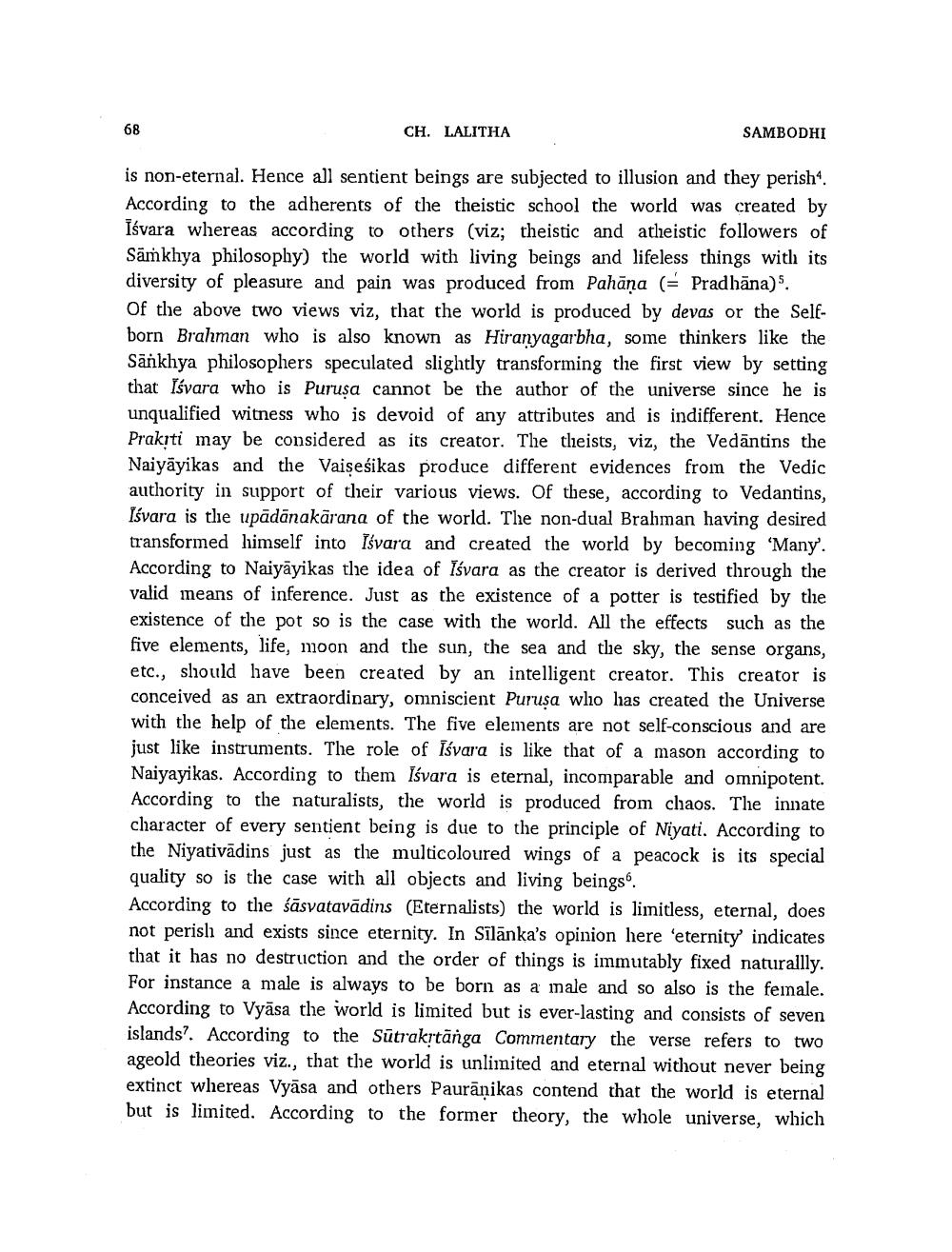________________
CH. LALITHA
SAMBODHI
is non-eternal. Hence all sentient beings are subjected to illusion and they perish“. According to the adherents of the theistic school the world was created by īśvara whereas according to others (viz; theistic and atheistic followers of Samkhya philosophy) the world with living beings and lifeless things with its diversity of pleasure and pain was produced from Pahāna (= Pradhāna). Of the above two views viz, that the world is produced by devas or the Selfborn Brahman who is also known as Hiranyagarbha, some thinkers like the Sankhya philosophers speculated slightly transforming the first view by setting that Iśvara who is Purusa cannot be the author of the universe since he is unqualified witness who is devoid of any attributes and is indifferent. Hence Prakiti may be considered as its creator. The theists, viz, the Vedāntins the Naiyāyikas and the Vaiseśikas produce different evidences from the Vedic authority in support of their various views. Of these, according to Vedantins, Isvara is tlie upādānakārana of the world. The non-dual Brahman having desired transformed limself into Isvara and created the world by becoming 'Many According to Naiyāyikas the idea of Isvara as the creator is derived through the valid means of inference. Just as the existence of a potter is testified by the existence of the pot so is the case with the world. All the effects such as the five elements, life, moon and the sun, the sea and the sky, the sense organs, etc., should have been created by an intelligent creator. This creator is conceived as an extraordinary, omniscient Purusa wlio las created the Universe with the help of the elements. The five elements are not self-conscious and are just like instruments. The role of Isvara is like that of a mason according to Naiyayikas. According to them Isvara is eternal, incomparable and omnipotent. According to the naturalists, the world is produced from chaos. The innate character of every sentient being is due to the principle of Niyati. According to the Niyativādins just as the multicoloured wings of a peacock is its special quality so is the case with all objects and living beings According to the śāsvatavādins (Eternalists) the world is limitless, eternal, does not perish and exists since eternity. In Sīlānka's opinion here 'eternity' indicates that it has no destruction and the order of things is immutably fixed naturallly. For instance a male is always to be born as a male and so also is the female. According to Vyāsa the world is limited but is ever-lasting and consists of seven islands?. According to the Sūtrakrtānga Commentary the verse refers to two ageold theories viz., that the world is unlimited and eternal without never being extinct whereas Vyāsa and others Paurānikas contend that the world is eternal but is limited. According to the former theory, the whole universe, which




